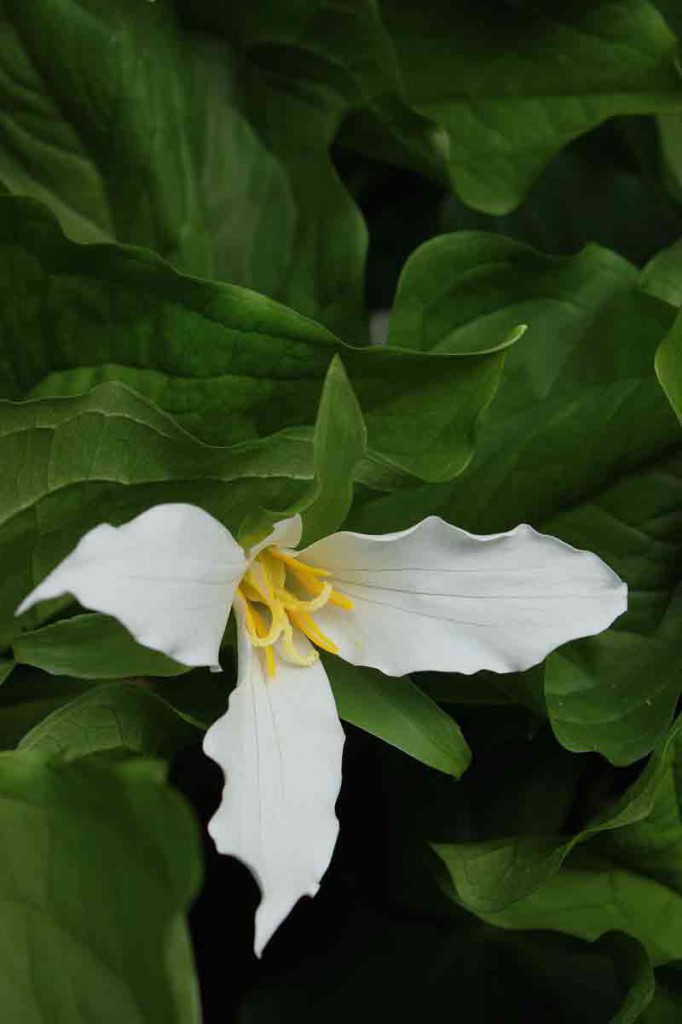Here in the Pacific Northwest trilliums are a welcomed sign that spring has arrived, even if it’s the coldest spring in over 60 years! Not only have I been enjoying these little spring beauties during my run through the forest but we’re fortunate to have several clusters of them in our yard. These flowers are not only beautiful but also have an intriguing story about their survival as a species.
While they impersonate a bulb they actually reproduce by seed, generally dispersed by ants. Each seed has an appendage which is rich in fat and mimics the smell of ant prey. The ants lug the seed back to their nests, eat ‘their prey’ or feed them to the larvae and then discard the seed in the ‘rubbish’ tunnels of their mounds. Poof, seed is ‘planted’ awaiting the next spring season to grow and bloom.
In some areas trilliums bloom at the same time robins appear, thus its appropriate common name wake robin. Its common name comes from the Latin trillium meaning ‘in 3’s’ referring to leaves, petals, sepals and stigmas, all in 3’s. The delicate white flowers fade to a pinkish/purple with age.
So there you have it, trivia for your next party about a beautiful and intriguing plant.
If you’re receiving my blog for the first time it’s because I’ve recently updated my blog mailing list to include more of my friends and family. I find this is a great way to stay in touch with those I don’t see very often.
Thanks for reading.
Nancy Cherry Eifert
- Fawn in Ferns
- Gray Squirrel in Cherry Tree
- Young Doe and Woodpile
- Our Little Campground Host
- Luminosity – Peonies
- Peony – A love Affair
- Miller Peninsula State Park – Beach Trail via Fireweed Road
- Iris Duo
- Dosewallip Dance
- Dosewallips River Valley Hike
- Cooper’s hawk in our pond
- Northern Pygmy Owl
- American Pika
- My Photos on Exhibit in the Port Townsend Carnegie Library
- Another successful Wooden Boat Festival
- One of my Photos in 48 North Magazine
- Tulips, Highland Cows and Trumpeter Swans
- Celebrating Spring
- My Owl Buddies
- Celebrating Dia de los Muertos at Seattle Center
- Point Reyes National Seashore
- Brightwork and Bliss
- Ptarmigans and Marmots
